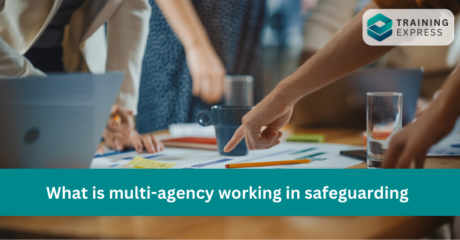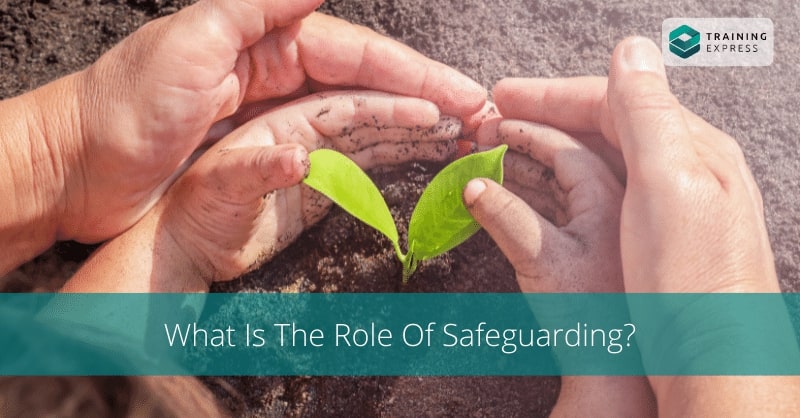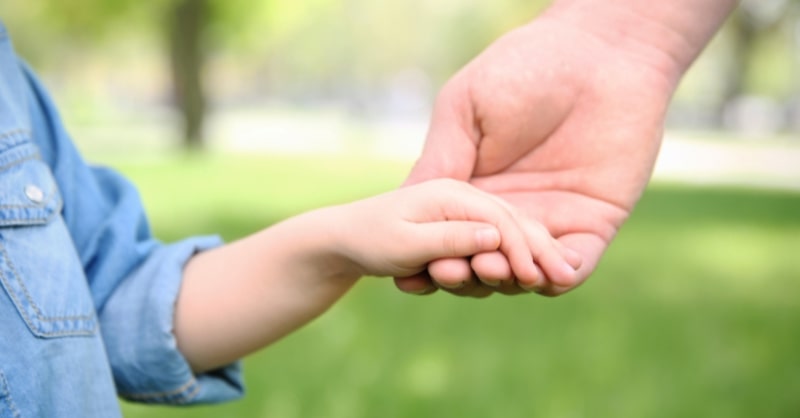

The role of safeguarding encompasses a wide range of areas. To establish a clear understanding of the role of safeguarding, you have to know what is safeguarding? Who requires safeguarding? And other basic aspects of it. So without further ado, let’s start!
Table of Contents
What is Safeguarding?
Safeguarding is the process of protecting children and adults from harm, abuse and neglect. Safeguarding covers a wide range of abuse and harm. Generally, children, vulnerable adults and individuals with disabilities need safeguarding. Yet, anyone can go through abuse or harm and need safeguarding.
Primary Safeguarding Concerns
An individual can be abused in many ways. However, there are some issues that can be more serious in nature than others. For example
- Country line exploitation
- Child criminal exploitation
- Child sexual exploitation
- Domestic abuse
- Grooming
- Upskirting
- Bullying
- Radicalisation
Why is Safeguarding Important?
Everyone deserves to be safe and protected from harm. It is a basic human right to have safety and security. When an organisation works with children or vulnerable adults, it must implement proper safeguarding policies. Otherwise, the number of abuse will increase. Along with that, vulnerable individuals will be at risk of harm and neglect.
Besides, the vulnerable individuals will be in utter distress as they will not know how to seek help. For these reasons, safeguarding has great significance.
Every organisation should also pay attention to safeguarding. Besides, the organisation must give priority to each employee’s safety. And vulnerable individuals should get the support they need. Furthermore, employers should provide adequate training on safeguarding. It will ensure the workers are aware of their role in safeguarding.
Common Types of Abuse
Abuse can have many forms mental, physical, sexual etc. But, there are some common patterns seen in victims of abuse. Here is a list of common types of abuses –

Emotional Abuse
Emotional abuse is also known as verbal abuse. Here, the abuser bullies victims through abusive words, shaming, blaming and manipulating. For example, name-calling.
Physical Abuse
Physical abuse is harming someone physically. Also, it means making them feel unsafe through physical actions. For example, hitting, kicking, slapping, strangling etc.
Mental Abuse
Mental abuse is when the abuser convinces the victim that they are mentally unstable. The abuser does it through different tricks. Thus, this abuse drains out a person’s mental and destroys their self-esteem.
Neglect
Neglect is ignoring someone and being unwilling to help or support them. Usually, sick people or children who can not do things themselves are the victims of neglect.
What is the Role of Safeguarding?
The role of safeguarding is to protect those who are unable to protect themselves from harm, abuse and neglect. But, the role of safeguarding does not end there; it also includes
- Recognising the signs of abuse
- Promoting the victim’s wellbeing
- Empowering the victims
- Reporting abuse or potential risks
These are the basic role of safeguarding that everyone must fulfil. Now, you might ask, what do those who have safeguarding as part of their role do? Well, each professional has a certain role to play in safeguarding. Also, what position they are working for determines their responsibilities.
What is the Role of a Practitioner in Safeguarding?
The role of safeguarding may differ, as each of the professionals has a certain role to play. But there are some basic safeguarding responsibilities that all practitioners have to complete.
- Understanding safeguarding policies and informing the relevant people about them
- Identifying abuse, neglect and harm
- Reporting on any concerns or safeguarding risks
- Assisting vulnerable individuals in taking their own decisions on safeguarding
- Maintaining a proper reporting and recording system
What is the Role of a Designated Safeguarding Lead?
The safeguarding lead is a safeguarding professional. They are responsible for ensuring that all the child safeguarding policies are followed. The core role and responsibilities of a designated safeguarding lead are –
- The safeguarding lead should always be available to discuss any safeguarding issues.
- Informing the child safeguarding issues to the right agencies. Also, gathering more information if needed.
- Making sure the staff members are well-trained in safeguarding. And they have the ability to raise concerns.
- Taking regular training and ensuring their knowledge is up-to-date with the guidelines.
- Establishing adequate report and recording systems for the safeguarding procedures.
- Checking if the safeguarding policies are coordinated with the most recent statutory guidelines. Also, ensuring that everyone responsible for safeguarding is aware of the updates.
- Abiding by the Local Safeguarding Children Partnership (LSCP) requirements.
- Ensuring that there is adequate safeguarding procedure in the organisation
- Identifying children who have particular vulnerabilities and need some specific safeguarding procedures.
What is the Role of a Health Visitor in Safeguarding?
Health visitors are NMC-registered nurses or midwives. They are specialised in community public health nursing. The health nurses work with families, especially those who have children aged from 0-5.
Health visitors also play a significant role in safeguarding. They are responsible for identifying any risk factors or vulnerabilities within the families. Moreover, it is their duty to report safeguarding threats or incidents. Besides, they are responsible for working with different services to safeguard children. For example, social services.
What is a Nurse’s Role in Safeguarding?
According to the Nurse and Midwife Council, nurses have a special role to play in safeguarding. Nurses work with patients who are unable to take care of themselves. Thus, it is the responsivity of the nurses to protect their patients from harm, abuse and neglect. If they identify any abuse, they must report it immediately. Moreover, it is their duty to ensure that the report follows the policies and procedures.

What are the Principles of Safeguarding?
The government of the UK developed six safeguarding principles. These principles are set to protect vulnerable individuals. These six principles are
1. Empowerment
Empowerment is helping vulnerable individuals and the people around them to take decisions. It means supporting them to gather confidence. And be competent in taking decisions related to safeguarding issues.
2. Protection
Providing support and protection to individuals who are at risk of harm and abuse.
3. Prevention
This principle aims to prevent harm, neglect, and abuse by implementing appropriate measures.
4. Proportionality
Each safeguarding issues are different. Thus, the measures should be proportionate and sensitive to each safeguarding need.
5. Partnership
Developing partnership with different groups is important for safeguarding. When communities and individuals come together, the safeguarding measures become more effective.
6. Accountability
Everyone working for safeguarding should be accountable and transparent about the valuable information.
Safeguarding Children
Children are vulnerable and prone to danger and harm. The Crime Survey for England and Wales, found out that 1 out of 5 people had faced abuse in their childhood.
Children can be easily manipulated and exploited. Moreover, they can’t differentiate between right and wrong. Also, they can’t identify the signs of abuse. So, children require more attention and support.

Besides, without proper safeguarding measures, children will grow up in an unsafe environment. They will become exposed to different types of traumatic experiences. These experience can hamper their development and hunt them for the rest of their lives. Due to all these reasons, it is crucial to safeguard children. It helps create an environment that will support their growth.
Children’s Safeguarding Policy
Every organisation working with children should have a strict child safeguarding policy. While developing the policy, some vital factors require focus. These factors are
- A demonstration of the objectives and aims or the policy of the organisation
- What measures will be taken if a child’s safety is at risk
- The process of safeguarding children from abuse
- Educating the staff about the relevant legislation and policy
- Identify those who are protected by the policy and those who should follow it
- Take account of the needs of children and safeguard them
Safeguarding Vulnerable Adults
Who are the vulnerable adults? Vulnerable adults are individuals who are unable to safeguard themselves from harm. Most of the time, disabled or incapable individuals are considered vulnerable adults. Yet, sometimes capable people fail to protect themselves due to many factors. These individuals are also vulnerable adults.
In order to safeguard adults, you have to take some essential measures. These measures will help you ensure that the endangered individuals are risk-free. Here is a list of the steps you should take
- Find a place where they are free from abuse and harm and can live safely
- Empower the suffering individual by helping them make their own choices
- Eliminate the risk of abuse and prevent it from happening
- Supporting the well-being of the person
What does the Law say about the Role of Safeguarding?
There are laws that safeguarding professionals need to be aware of. These laws are
The Care Act 2014
This law – The Care Act 2014 focuses on safeguarding vulnerable adults. Here, the legislation instructs on the process of protecting vulnerable adults from harm and neglect. From local authorities to care workers, it determines everyone’s roles in safeguarding.
The Children Act 1989
The Children Act 1989 is one of the significant laws regarding child safeguarding. This legislation covers the vital areas of child safeguarding. According to this law, child welfare should be a major priority for the responsible authorities. Moreover, this legislation designed a wide range of rules to ensure child safety.
The Children and Social Work Act 2017
The Children and Social Work Act 2017 is based on the initial Children act. Here, more emphasis goes on the roles of caregivers and clinical commissioning groups. In addition, it also focuses on protecting whistleblowers. Also, ensuring that safeguarding practices are appropriately performed.
The Safeguarding Vulnerable Groups Act 2006
This act covers the evaluation process of safeguarding professionals. The law ensures that well-trained professionals are working to protect vulnerable individuals.
What does Safeguarding Training Involve?
The role of safeguarding is diverse. A safeguarding professional requires a set of skills and abilities. Therefore, adequate training is a must to be a proficient safeguarding professional. There is a wide range of e-learning platforms that provide safeguarding training.
Online Training Academy is a leading online training provider. Here you will find a good number of courses designed for safeguarding professionals. Safeguarding training includes
- the principles of safeguarding,
- safeguarding legislation,
- child safeguarding,
- safeguarding vulnerable adults and other important topics.
Summary
In order to live a full life, each individual needs to feel safe in their homes, workplace, and schools. Anywhere and everywhere. To create a safe surrounding, everyone has to work together. Just depending on the safeguarding professionals are not enough. Without working as a team, it is not possible to accomplish the purpose and role of safeguarding


- Available Courses
- Construction38
- Teaching12
- Teaching & Academics Primary20
- Accounting & Finance Primary15
- Design4
- IT & Software37
- Healthcare75
- Marketing27
- Career Bundles69
- Health and Safety321
- Electronics24
- Hospitality21
- Health and Social Care192
- Child Psychology31
- Management313
- Business Skills236
- First Aid63
- Employability252
- Safeguarding59
- Food Hygiene96
- Personal Development1157






0 responses on "What is the Role of Safeguarding?"